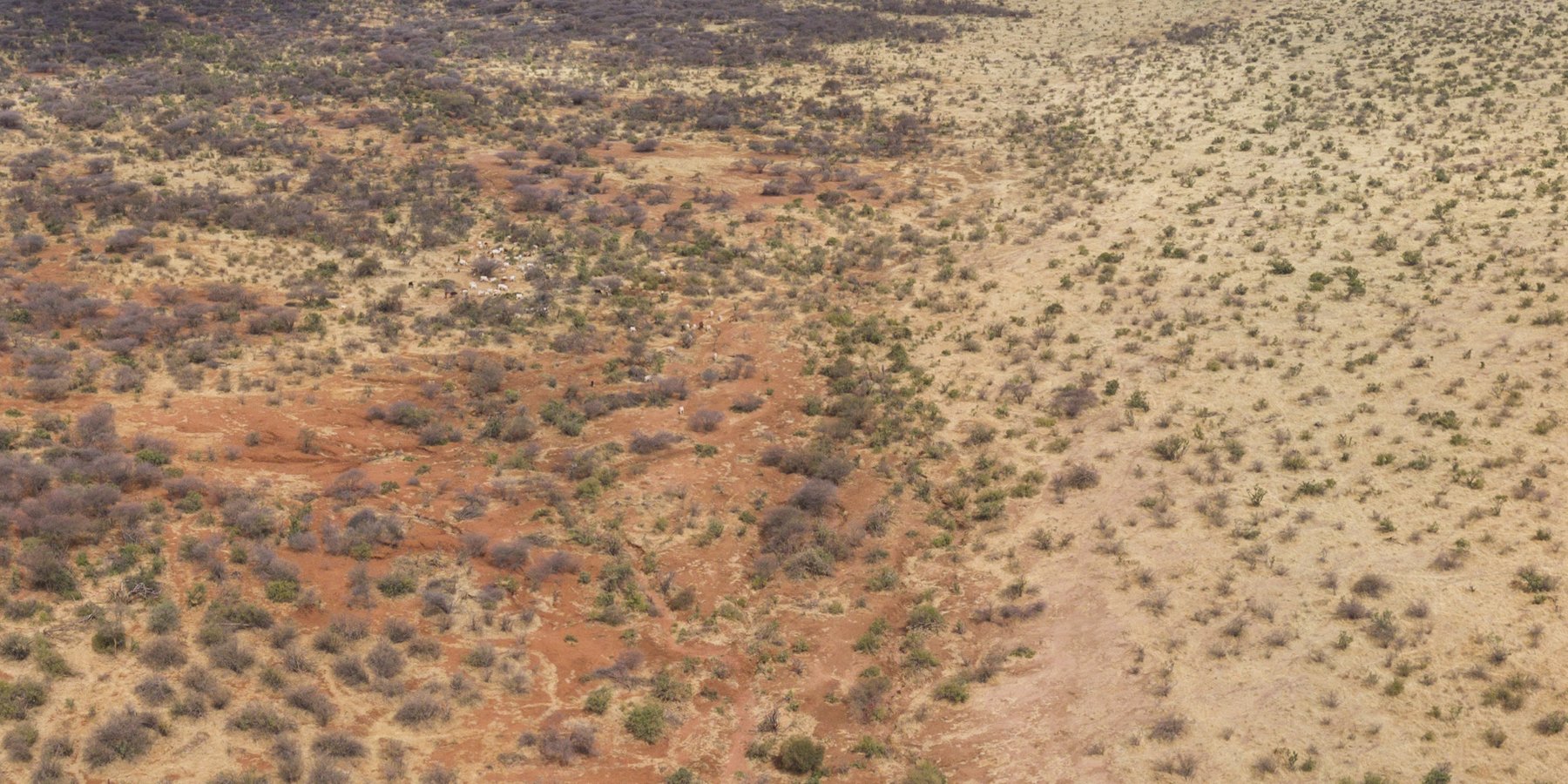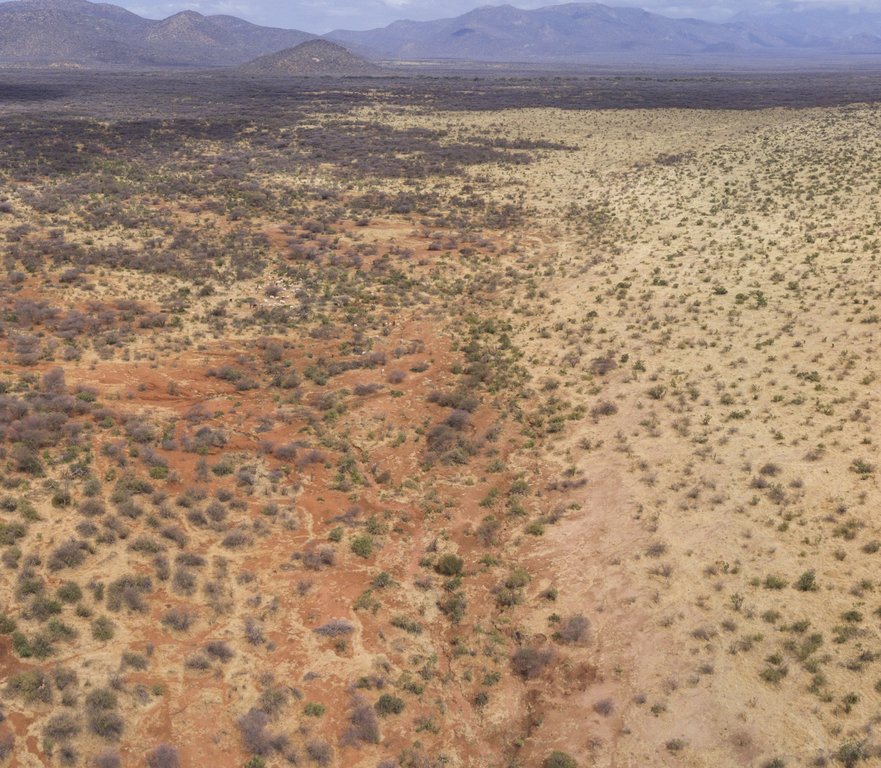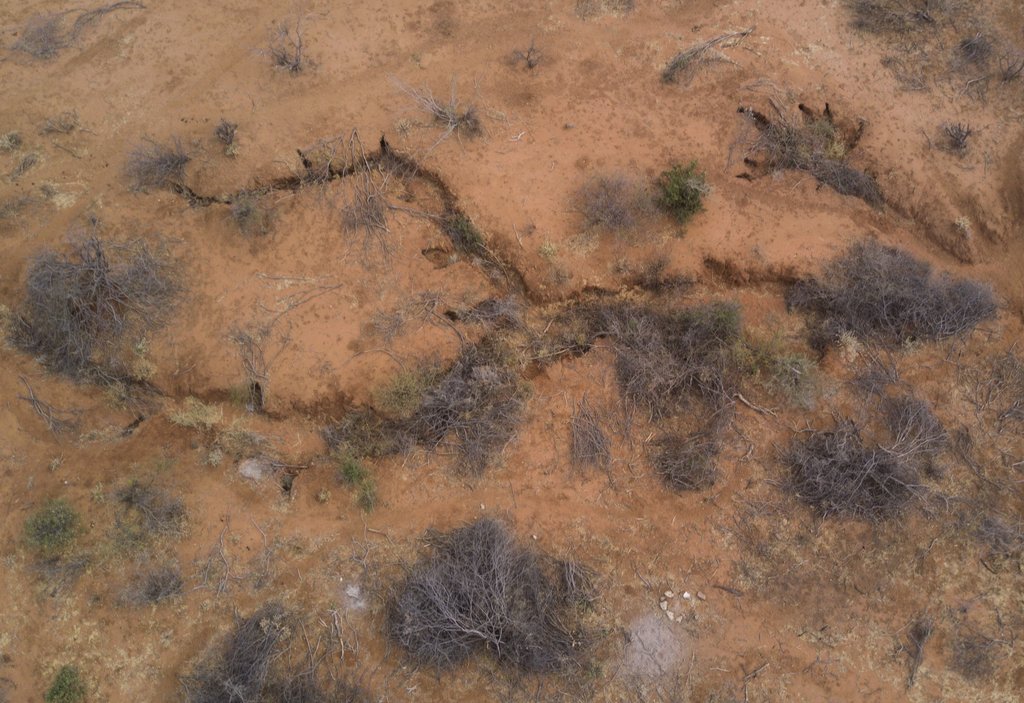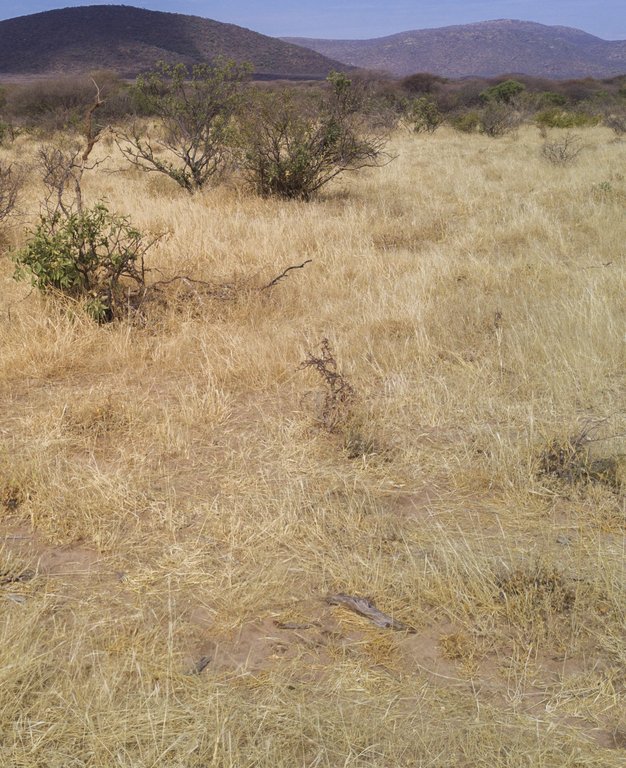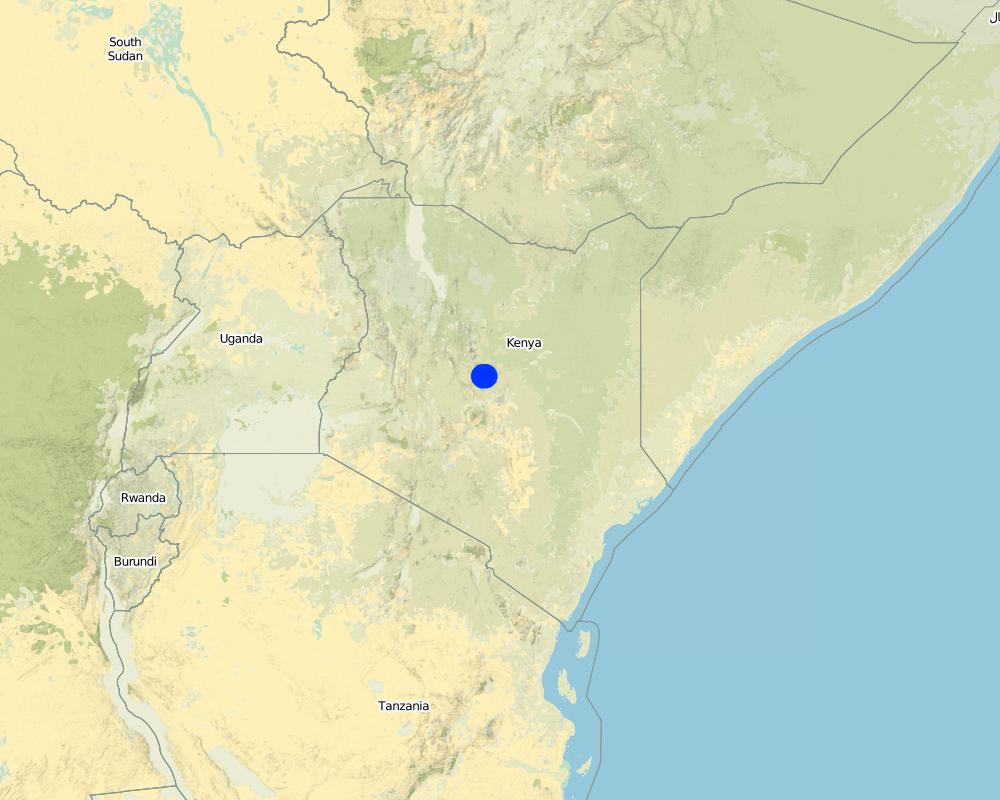Rangeland Restoration by cutting invasive species and grass reseeding and managing grazing [كينيا]
- تاريخ الإنشاء:
- تحديث:
- جامع المعلومات: Harry Wells
- المحرر: –
- المراجعون: Rima Mekdaschi Studer, Barbara *, Donia Mühlematter
technologies_3381 - كينيا
- Rangeland Restoration by cutting invasive species and grass reseeding and managing grazing: 16 يوليو، 2018 (inactive)
- Rangeland Restoration by cutting invasive species and grass reseeding and managing grazing: 6 مايو، 2019 (inactive)
- Rangeland Restoration by cutting invasive species and grass reseeding and managing grazing: 3 سبتمبر، 2018 (inactive)
- Rangeland Restoration by cutting invasive species and grass reseeding and managing grazing: 2 نوفمبر، 2021 (public)
- Rangeland Restoration by cutting invasive species and grass reseeding and managing grazing : 23 مارس، 2018 (inactive)
عرض الأقسام
توسيع الكل طي الكل1. معلومات عامة
1.2 تفاصيل الاتصال بالأشخاص الرئيسيين لمصدر المعلومات والمؤسسات المشاركة في تقييم وتوثيق التقنية
الشخص (الأشخاص) الرئيسي لمصدر المعلومات
مستخدم الأرض:
1.3 الشروط المتعلقة باستخدام البيانات الموثقة من خلال WOCAT
متى تم تجميع البيانات (ميدانيا)؟:
26/01/2018
يوافق جامع المعلومات والشخص (لاشخاص) الرئيسي لمصدر المعلومات على الشروط المتعلقة باستخدام البيانات الموثقة من خلال WOCAT:
نعم
1.4 إعلان بشأن استدامة التقنية الموصوفة
هل التقنية الموصوفة هنا تمثل مشكلة فيما يتعلق بتدهور الأراضي، بحيث لا يمكن إعلانها تقنية مستدامة لإدارة الأراضي؟:
كلا
2. وصف تقنيةالإدارة المستدامي للأراضي
2.1 وصف مختصر للتقنية
تعريف التقنية:
This 'Rangeland Restoration' technology is part of a 'Holistic Rangeland Management' approach. It involves clearing of invasive vegetation (predominantly Acacia reficiens) and reseeding with grass (Cenchrus ciliaris) and allowing resting and reduced grazing pressure to rehabilitate degraded communal grazing land.
2.2 وصف تفصيلي للتقنية
الوصف:
The 'Rangeland Restoration' technology is applied in degraded sites within the 3,100 Ha 'core conservation area' (an central area with minimised grazing pressure designated for tourism) and 'buffer zone' (an area surrounding the 'core conservation area' with reduced grazing pressure) of the Kalama Community Wildlife Conservancy (total area: 9,500 Ha).
The main characteristics are clearing of invasive woody vegetation (predominantly Acacia reficiens) and reseeding with grass (Cenchrus ciliaris). Acacia reficiens (commonly known as red-bark acacia, red thorn or false umbrella tree or thorn) is a native tree or shrub but is considered an invasive species as it can encroach degraded areas with bare and disturbed soil. It is very opportunistic and hardy and can subsequently take over large areas of native vegetation. The invasion can reach a closed or nearly closed canopy with A. reficiens thickets, which are hindering animals to enter and access fodder thus making the area inaccessible for grazing and browsing. Additionally it can be observed that the soil underneath the canopy remains bare and the grass growth seems to be suppressed. As a result the top soil is compacted or forms crusts, which hinder infiltration. During the erratic but heavy rains most of the water flows away as runoff (research in close by areas show that runoff is between 60-80 % of the rainfall) and increases soil erosion and further degradation of the land despite a rather good tree cover. Rangeland grass and fodder productivity in these areas are reduced to a fraction of their potential.
The main activity is the cutting of the trees and shrubs at a height of ~1 m. The main trunks and branches can be used for fencing, temporary house constructions, firewood and charcoal. Most of the cut trees and the remaining branches are used to spread on the bare land where the trees and shrubs are cut. Underneath this dead material the bare soil receives some cover, which creates favorable conditions and microclimate for termites and other fauna in the soil to brake the hard top soil and crust and enable infiltration of the water during the next rains. This allows regrowth of grasses, particularly in the areas protected by the branches. In the following seasons the spread of the grasses can increase also the the area not protected by the branches. Additionally, seeding with Cenchrus ciliaris (buffel-grass or African foxtail grass), a grass species which is native to most of Africa, enhances the growth of a highly valuable fodder grass. Seeds are hand-broadcasted in the treated areas and germinate during the next rainy season. The first greening is visible in the places where the branches and the wood pieces cover the soil. From there the local annual and perennial grasses start colonising and expanding in the following seasons until, ideally, the whole area that has been bare is covered by valuable perennial grasses. Parallel to the cutting and reseeding is reduced grazing pressure and a resting period over at least one dry season, which is facilitated by the fact that treated areas are situated in the core conservation area or in the buffer zone. This involves the cooperation of the members of Kalama Conservancy, who agree to restrict grazing in the buffer zone and more so in the core conservation area. The exact duration that grazing is allowed in each of these two areas varies year to year depending on drought severity and forage availability. Whereas the grazing pressure by livestock can be regulated, there remains uncontrolled grazing by wildlife. The major herbivores are zebra, elephants and a number of different gazelle and antelope species the grazing pressure by wildlife varies but can be substantial at certain times.
Rehabilitating degraded grazing land is the primary purpose of the technology. Other benefits of the technology include: 1) augmented forage availability for the community; 2) increased livestock production; 3) reduced soil erosion and flooding. Land users enjoy these benefits but would like larger areas to be similarly restored. However, the limiting factor is the funding required to pay for labour, which is the major input required for the clearing and reseeding activities. Establishing a market for removing the main stems and producing and selling charcoal is still an opportunity to further explore immediate benefits and cash income in order to pay for the investment into the clearing.
2.3 صور التقنية
2.5 البلد/المنطقة/المواقع التي تم تنفيذ التقنية فيها والتي يغطيها هذا التقييم
البلد:
كينيا
المنطقة/الولاية/المحافظة:
Samburu County
Map
×2.6 تاريخ التنفيذ
اذكر سنة التنفيذ:
2006
في حالة عدم معرفة السنة بالتحديد، يرجى الإشارة إلى التاريخ التقريبي:
- منذ 10-50 سنة
2.7 إدخال التقنية
حدد كيف تم إدخال التقنية:
- من خلال المشاريع/ التدخلات الخارجية
التعليقات (نوع المشروع، الخ):
Acacia reficiens was already selectively cleared traditionally when constructing livestock corrals ('bomas'), but the introduction of more extensive clearing and grass-reseeding to rehabilitate specific areas was facilitated by Northern Rangeland Trust and Grevy's Zebra Trust.
3. تصنيف تقنية الإدارة المستدامي للأراضي
3.1 الغرض الرئيسي ( الأغراض الرئيسية) للتقنية
- الحد من تدهور الأراضي ومنعه وعكسه
- الحفاظ على النظام البيئي
- الحفاظ على/تحسين التنوع البيولوجي
3.2 نوع (أنواع) استخدام الأراضي الحالية حيث يتم تطبيق التقنية

أراضي الرعي
أراضي الرعي الواسع النطاق:
- رعي شبه مرتحل
- مربى ماشية محدد
الأنواع والمنتجات الحيوانية الرئيسية:
Cattle (milk, beef), Sheep/Goats (milk, meat), Camels (milk, meat), Donkeys

أرض غير منتجة
حدد:
Bare and/or degraded land
ملاحظات:
The area has been overused and continuously grazed for a long period of time without given the land and vegetation a break to recover. Thus a vicious spiral developed: the reduced grass cover lead to degradation of the soil to compaction and crusting, reduced infiltration thus reduced runoff and reduced vegetation growth, which in turn increased the pressure on the remaining vegetation and thus more base soil etc.
3.3 مزيد من المعلومات حول استخدام الأراضي
إمدادات المياه للأرض التي يتم تنفيذ التقنية عليها:
- بعلية
عدد مواسم الزراعة في السنة:
- 2
حدد:
Rainiy seasons from April to June and from October to December but with high variability in time and amount
كثافة الثروة الحيوانية (إذا كانت ذات صلة):
likely continuously growing till technology was introduced
3.4 مجموعةالإدارة المستدامة للأراضي التي تنتمي إليها هذه التقنية
- الرعي وإدارة المراعي
- تحسين الغطاء الأرضي/النباتي
- تحسين أصناف النباتات/سلالات الحيوانات
3.5 انتشار التقنية
حدد انتشار التقنية:
- يتم تطبيقها في نقاط محددة/ تتركز على مساحة صغيرة
3.6 التدابير التقنية في مجال إلادارة المستدامة للأراضي

التدابير النباتية
- V2: الأعشاب والنباتات العشبية المعمرة
- V4: استبدال أو إزالة الأنواع الدخيلة/الغازية

التدابير الإدارية
- M2: تغيير في مستوى الإدارة/الكثافة
3.7 الأنواع الرئيسية من تدهور الأراضي التي تناولتها التقنية

تآكل التربة بالمياه
- الوزن(Wt): فقدان التربة السطحية/تآكل السطح
- (Wg):الانجراف الخلجاني/ الخلجان

التدهور المادي أو الفيزيائي للتربة
- (Pc) : تراص التربة
- (Pk)ظهور وتكون قشرة سطحية

التدهور البيولوجي
- (Bc): تناقص الغطاء النباتي
- (Bs): انخفاض جودة وتركيبة الأنواع/التنوع
- (Bl): فقدان الحياة بالتربة

تدهور المياه
- (Ha): التجفيف
3.8 منع أو حد أو عكس تدهور الأراضي
تحديد هدف التقنية فيما يتعلق بتدهور الأراضي:
- الحد من تدهور الأراضي
- اصلاح/إعادة تأهيل الأراضي المتدهورة بشدة
4. المواصفات الفنية، وأنشطة التنفيذ، والمدخلات، والتكاليف
4.1 الرسم الفني للتقنية
4.2 المواصفات الفنية/شروحات الرسم الفني
A total of 279 hectares were treated with this rangeland restoration technology (clearing invasive Acacia reficiens and reseeding with Cenchrus ciliaris). Treated areas were relatively flat (slope < 5%). A. reficiens were cut ~1 m above the ground and well before the onset of the rains to discourage regeneration. C. ciliaris seeds were hand-broadcast at a rate of ~45 kg/Ha.
Holding membership of multiple community conservancies facilitates the movement between wet season and dry season grazing areas. For example, many of the local communities move their livestock to Losesia, in Sera Conservancy, for dry season grazing. These porous boundaries relieve pressure from Kalama Conservancy during some parts of the year, potentially facilitating recovery of treated areas, but also allows neighbouring communities to access treated areas rendering their grazing management challenging.
4.3 معلومات عامة بخصوص حساب المدخلات والتكاليف
حدد كيفية احتساب التكاليف والمدخلات:
- حسب مساحة تنفيذ التقنية
الإشارة إلى حجم ووحدة المساحة:
279 hectares (total over 6 sites)
عملة أخرى/ عملة وطنية (حدد):
Kenya Shillings
أشر إلى سعر الصرف من الدولار الأمريكي إلى العملة المحلية (إذا كان ذا صلة): 1 دولار أمريكي =:
101,0
اذكر متوسط تكلفة أجر العمالة المستأجرة في اليوم الواحد:
450 Kenya Shillings
4.4 أنشطة التأسيس
| النشاط | نوع التدبير | التوقيت | |
|---|---|---|---|
| 1. | Clearing Acacia reficiens (cutting and spreading) | نباتية | During dry season, well before the onset of rains to prevent Acacia reficiens regrowth from stump. |
| 2. | Reseeding with Cenchrus ciliaris grass seed | نباتية | Prior to the onset of rainy season to maximise germination and establishment of Cenhrus ciliaris.. |
4.5 التكاليف والمدخلات اللازمة للتأسيس
| تحديد المدخلات | الوحدة | الكمية | التكاليف لكل وحدة | إجمالي التكاليف لكل مدخل | % من التكاليف التي يتحملها مستخدمو الأراضي | |
|---|---|---|---|---|---|---|
| العمالة | Clearing Acacia reficiens | person-days | 1200,0 | 450,0 | 540000,0 | |
| العمالة | Hand-broadcasting Cenchrus ciliaris seeds | person-days | 1200,0 | 450,0 | 540000,0 | |
| معدات | Machettes | units | 40,0 | 500,0 | 20000,0 | |
| المواد النباتية | Cenchrus ciliaris seeds | kg | 2520,0 | 50,0 | 126000,0 | |
| غير ذلك | Transport of workers to and from site | litre | 600,0 | 100,0 | 60000,0 | |
| إجمالي تكاليف إنشاء التقنية | 1286000,0 | |||||
إذا تحمل مستخدم الأرض أقل من 100% من التكاليف، حدد من قام بتغطية التكاليف المتبقية:
Funding raised by Northern Rangelands Trust and Grezy's Zebra Trust (including USAID and FAO funding).
التعليقات:
These are the costs associated a 55 Ha treated area. Six sites of a similar size were treated with similar budgets totalling 279 Ha.
4.6 الصيانة/الأنشطة المتكررة
التعليقات:
No maintenance activities.
4.7 التكاليف والمدخلات اللازمة للصيانة/للأنشطة المتكررة (سنويًا)
التعليقات:
No maintenance costs.
4.8 أهم العوامل المؤثرة على التكاليف
قدم وصفا لأهم العوامل التي تؤثر على التكاليف:
Hiring labour, as it was the most costly component.
5. البيئة الطبيعية والبشرية
5.1 المناخ
هطول الأمطار السنوي
- < 250 مم
- 251- 500 ملم
- 501 - 750ملم
- 1,000-751 ملم
- 1,500-1,100 ملم
- 2,000-1,500 ملم
- 3,000-2,001 ملم
- 4,000-3,100 ملم
- > 4000 ملم
حدد متوسط هطول الأمطار السنوي (إذا كان معروفًا)، بالملليمتر:
351,00
الإشارة إلى اسم محطة الأرصاد الجوية المرجعية المعنية:
Archer's Post
المنطقة المناخية الزراعية
- شبه قاحلة
5.2 طوبوغرافيا
متوسط الانحدارات:
- مسطح (0-2%)
- بسيط (3-5%)
- معتدل (6-10%)
- متدحرج (11-15%)
- تلال (16-30%)
- شديدة الانحدار(31-60%)
- فائقة الانحدار (>60%)
التضاريس:
- هضاب/سهول
- أثلام مرتفعة
- المنحدرات الجبلية
- منحدرات التلال
- منحدرات في السفوح
- قاع الوادي
المنطقة الارتفاعية:
- 100-0 متر فوق سطح البحر
- 500-101 متر فوق سطح البحر
- 1,000-501 متر فوق سطح البحر
- 1,500-1,001 متر فوق سطح البحر
- 2,000-1,501 متر فوق سطح البحر
- 2,500-2,100 متر فوق سطح البحر
- 3,000-2,501 متر فوق سطح البحر
- 4,000-3,001 متر فوق سطح البحر
- > 4000 متر فوق سطح البحر
وضح ما إذا كانت التقنية مطبقة على وجه التحديد في:
- غير ذات صلة
5.3 التربة
متوسط عمق التربة:
- ضحل جدًا (0-20 سم)
- ضحلة (21-50 سم)
- متوسطة العمق (51-80 سم)
- عميقة (81-120 سم)
- عميقة جدًا (> 120 سم)
قوام التربة (التربة السطحية):
- خشن / خفيف (رملي)
قوام التربة (> 20 سم تحت السطح):
- خشن / خفيف (رملي)
المواد العضوية في التربة السطحية:
- منخفضة (<1%)
إذا كان متاحًا، قم بإرفاق وصف كامل للتربة أو تحديد المعلومات المتوفرة، على سبيل المثال نوع التربة، الرقم الهيدروجيني/ درجة حموضة التربة، قدرة التبادل الكاتيوني، النيتروجين، الملوحة وما إلى ذلك.
pH ~7-8.5; SOC 4.7 g/kg of soil; Na ~0.1-0.4 cmolc/kg
5.4 توافر المياه ونوعيتها
منسوب المياه الجوفية:
> 50 م
توافر المياه السطحية:
ضعيف/ غير متوافر
نوعية المياه (غير المعالجة):
مياه الشرب سيئة (تتطلب معالجة)
هل تعتبر ملوحة الماء مشكلة؟:
كلا
هل تحدث فيضانات في المنطقة؟:
كلا
5.5 التنوع البيولوجي
تنوع الأنواع:
- مرتفع
تنوع الموائل:
- متوسط
التعليقات والمواصفات الإضافية بشأن التنوع البيولوجي:
Rangelands in Kenya are generally characterized by high bio-diversity. The particular sites have been degraded in terms of vegetation ans soils. After the restoration diversity increases but has not reached its full potential.
5.6 خصائص مستخدمي الأراضي الذين يطبقون التقنية
مستقر أو مرتحل:
- شبه مرتحل
التوجه السوقي لنظام الإنتاج:
- مختلط (كفاف/ تجاري)
الدخل من خارج المزرعة:
- >50% من إجمالي الدخل
المستوى النسبي للثروة:
- متوسط
أفراداً أو مجموعات:
- المجموعات/ المجتمع المحلي
مستوى المكننة:
- عمل يدوي
الجنس:
- رجال
عمر مستخدمي الأرضي:
- شباب
- متوسط العمر
اذكر الخصائص الأخرى ذات الصلة لمستخدمي الأراضي:
Kalama Conservancy receives considerable income from the high end tourism (~60% of total income) and donations (~25% of total income).
5.7 متوسط مساحة الأرض المملوكة أو المستأجرة من قبل مستخدمي الأراضي الذين يطبقون التقنية
- < 0.5 هكتارا
- 0.5 - 1 هكتار
- 1 -2 هكتار
- 2 - 5 هكتار
- 5 - 15 هكتار
- 15 - 50 هكتار
- 50 - 100هكتار
- 500-100 هكتار
- 1,000-500 هكتار
- 10,000-1,000 هكتار
- > 10,000 هكتار
هل يعتبر هذا نطاقًا صغيرًا أو متوسطًا أو واسعا (في إشارة إلى السياق المحلي)؟:
- على نطاق واسع
التعليقات:
communally owned
5.8 ملكية الأراضي، وحقوق استخدام الأراضي، وحقوق استخدام المياه
ملكية الارض:
- مجتمعي/قروي
حقوق استخدام الأراضي:
- مجتمعي (منظم)
حقوق استخدام المياه:
- مجتمعي (منظم)
5.9 الوصول إلى الخدمات والبنية التحتية
الصحة:
- ضعيف
- معتدل
- جيد
التعليم:
- ضعيف
- معتدل
- جيد
المساعدة التقنية:
- ضعيف
- معتدل
- جيد
العمل (على سبيل المثال خارج المزرعة):
- ضعيف
- معتدل
- جيد
الأسواق:
- ضعيف
- معتدل
- جيد
الطاقة:
- ضعيف
- معتدل
- جيد
الطرق والنقل:
- ضعيف
- معتدل
- جيد
مياه الشرب وخدمات الصرف الصحي:
- ضعيف
- معتدل
- جيد
الخدمات المالية:
- ضعيف
- معتدل
- جيد
6. الآثار والتصريحات الختامية
6.1 الآثار التي أظهرتها التقنية في الموقع
الآثار الاجتماعية والاقتصادية
الإنتاج
إنتاج الأعلاف
التعليقات/ حدد:
due to degradation fodder production before was minimal both for grasses (hardly that survived the grazing pressure) as well as accessible browse material
جودة العلف
التعليقات/ حدد:
perennial grasses were brought back
إنتاج حيواني
إنتاج الخشب
التعليقات/ حدد:
cut wood of the invasive species can be used for charcoal production, and construction material. The amount is high but the marketing is still weak, so most of it is left to be spread on the ground
جودة الغابات/الأراضي الحرجية
التعليقات/ حدد:
one dominate invasive wood species was removed to give way for other native species to repopulate the area
الآثار الاجتماعية والثقافية
الأمن الغذائي / الاكتفاء الذاتي
المعرفة بالإدارة المستدامة للأراضي/تدهور الأراضي
التخفيف من حدة الصراع
الآثار الايكولوجية
دورة المياه / الجريان السطحي
الجريان السطحي
التعليقات/ حدد:
There is still potential to decrease runoff further as the system is still recovering and improving.
التربة
رطوبة التربة
غطاء التربة
فقدان التربة
تكون قشرة التربة السطحية/انسداد مسام التربة
تراص التربة
دورة المغذيات/إعادة الشحن
المادة العضوية في التربة/تحت الطبقة c
التنوع البيولوجي: الغطاء النباتي، الحيوانات
الغطاء النباتي
الكتلة الحيوية/ طبقة الكربون فوق التربة
التنوع النباتي
6.2 الآثار التي أظهرتها التقنية خارج الموقع
الفيضان في اتجاه مجرى النهر
تراكم الطمي باتجاه مصب النهر
الضرر على البنية التحتية العامة/ الخاصة
التعليقات/ حدد:
damage on major bridges but also on smaller within the conservancy
6.3 تعرض التقنية وحساسيتها لتغير المناخ التدريجي والظواهر المتطرفة/الكوارث المرتبطة بالمناخ (كما يراها مستخدمو الأراضي)
تغير مناخ تدريجي
تغير مناخ تدريجي
| الموسم | نوع التغير المناخي/ المتطرف | كيف تتعامل التقنية مع ذلك؟ | |
|---|---|---|---|
| درجة الحرارة السنوية | زيادة | باعتدال |
الظواهر المتطرفة / الكوارث المرتبطة بالمناخ
الكوارث الجوية
| كيف تتعامل التقنية مع ذلك؟ | |
|---|---|
| عاصفة ممطرة محلية | جيدة جدا |
الكوارث المناخية
| كيف تتعامل التقنية مع ذلك؟ | |
|---|---|
| جفاف | جيدا |
6.4 تحليل التكلفة والعائد
كيف يمكن مقارنة العوائد نسبة لتكاليف الإنشاء (من وجهة نظر مستخدمي الأراضي)؟
عوائد قصيرة الأجل:
إيجابي
عوائد طويلة الأجل:
ايجابي جدا
6.5 اعتماد التقنية
- حالات فردية/تجريبية
من بين جميع الذين تبنوا التقنية، كم عدد الذين فعلوا ذلك بشكل تلقائي، أي دون تلقي أي حوافز مادية/مدفوعات؟:
- 10-0%
6.6 التكيف
هل تم تعديل التقنية مؤخرًا لتتكيف مع الظروف المتغيرة؟:
كلا
6.7 نقاط القوة / المزايا / الفرص التي توفرها التقنية
| نقاط القوة/ المزايا/ الفرص من وجهة نظر مستخدمي الأراضي |
|---|
| Land that was previously considered unproductive is now considered grazing land. |
| Increased infiltration and decreased runoff and water erosion. |
| Recolonisation by local grasses and forbs to replace reseeded Cenchrus ciliaris after 1-2 years provides nutritious forage (particularly the forbs) for livestock. |
| نقاط القوة/ المزايا/ الفرص من وجهة نظر جامع المعلومات أو غيره من الاشخاص الرئيسيين لمصدر المعلومات |
|---|
| Decreased impact of the invasive Acacia reficiens on vegetation and soil within treated areas. |
| Increased biomass of herbaceous vegetation for livestock and wildlife forage. |
| Augmented biodiversity after reseeded Cenchrus ciliaris replaced by local grasses and forbs. |
6.8 نقاط ضعف / مساوىء / مخاطر التقنية وسبل التغلب عليها
| نقاط الضعف/ المساوىء/ المخاطر من وجهة نظر مستخدم الأراضي | كيف يمكن التغلب عليها؟ |
|---|---|
| Creates overly high expectations from the community regarding the potential to restore larger areas. | Raise awareness among community members regarding the limitations of large-scale restoration. |
| Lack of funds to pay labourers. Paying community members to undertake restoration activities rather than these activities being voluntary is now, in hindsight, perceived to have been a mistake. | There will never be enough funding as labourers will continue to expect ever-increasing wages. However, over time, community members may decide to restore land voluntarily. Explore the potential for marketing the main trunks for charcoal production of firewood to pay for the labourers. |
| Controlling grazing in recovering areas. | Raise awareness about the restoration projects within immediate and neighbouring communities. Also, ensure grazing by-laws are implemented and offenders fined. |
| Land users unwilling to voluntarily take part in restoration activities. | Increase ownership by conducting restoration projects at more local zonal-levels rather than at the conservancy-level. Create additional incentives by using and marketing of some of the wood material (for legal charcoal production) |
| نقاط الضعف/ المساوىء/ المخاطر من وجهة نظر جامع المعلومات أو غيره من الاشخاص الرئيسيين لمصدر المعلومات | كيف يمكن التغلب عليها؟ |
|---|---|
| Inability to provide adequate rest to treated areas (i.e. by controlling grazing pressure) leading to unsuccessful establishment of Cenchrus ciliaris or other herbaceous vegetation in treated areas, particularly in 'buffer zone'. | Implement grazing rules more stringently. |
| Lack of capacity regarding how to reseed Cenchrus ciliaris in some treated areas. In one case, seeds were buried (as farmers do with maize seeds), which is reported to have contributed to low establishment success of C. ciliaris seeds. | Capacity building. |
| Germination and establishment of Cenchrus ciliaris depends on timing in relation to the onset of rains, which are unpredictable and led to unsuccessful rehabilitation of some treated areas. | Provide most accurate weather forecasts available. |
7. المراجع والروابط
7.1 طرق جمع/مصادر المعلومات
- زيارات ميدانية، مسوحات ميدانية
2 field visits to the sites
- مقابلات مع مستخدمي الأراضي
3 informants
- التجميع من التقارير والوثائق الأخرى الموجودة
1 report
7.2 المراجع للمنشورات المتاحة
العنوان، المؤلف، السنة، النظام القياسي الدولي لترقيم الكتب ISBN:
'Northern Rangeland Trust: Baseline assessment of rangeland health - Kalama and Namunyak conservancies', Tor-G. Vågen & Leigh A. Winowiecki, 2014
متاح من أين؟كم التكلفة؟:
https://cgspace.cgiar.org/bitstream/handle/10568/65671/nrtReport_march2014.pdf?sequence=1
7.3 روابط للمعلومات ذات الصلة المتوفرة على الإنترنت
العنوان/الوصف:
Northern Rangeland Trust: Baseline assessment of rangeland health - Kalama and Namunyak conservancies
عنوان الرابط URL:
https://cgspace.cgiar.org/bitstream/handle/10568/65671/nrtReport_march2014.pdf?sequence=1
الروابط والوحدات المواضيعية
توسيع الكل طي الكلالروابط
لا يوجد روابط
الوحدات المواضيعية
لا يوجد وحدات مواضيعية


